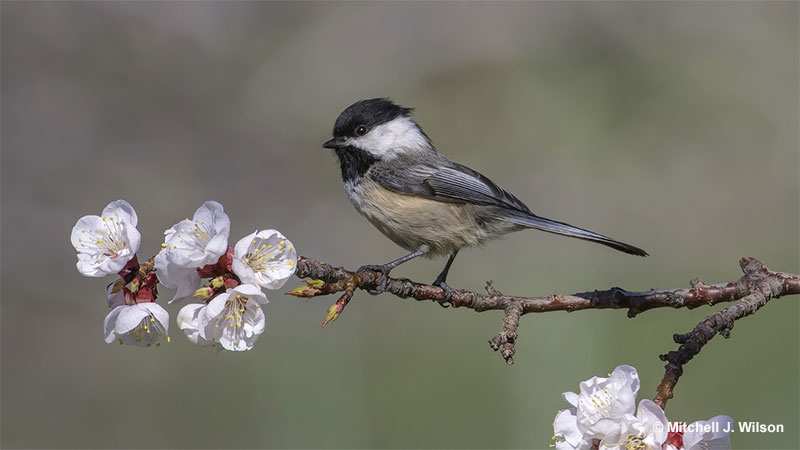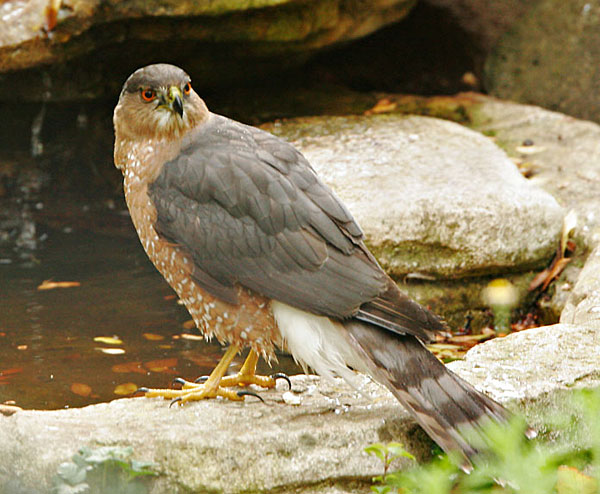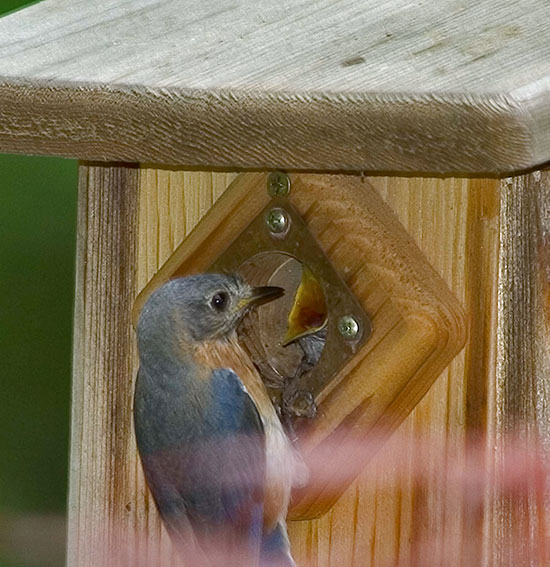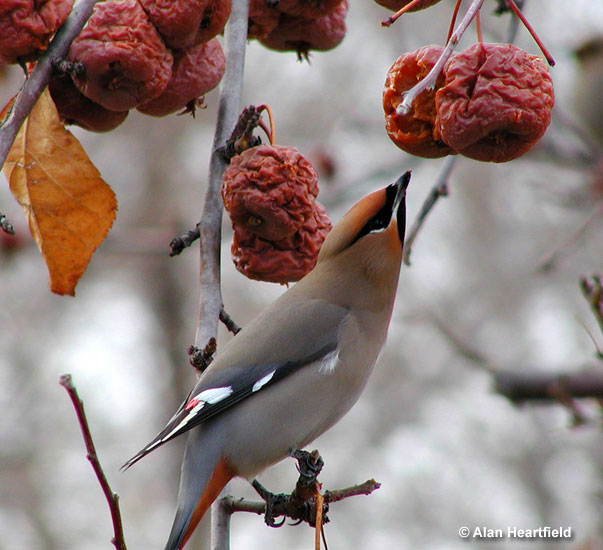
Just like other animals, birds need places that protect them from bad weather and predators. Fortunately, it’s pretty easy to provide birds with places where they can rest and feel safe.
Bird houses can work along with planting certain types of vegetation and other factors.
What do birds need for shelter? How can you improve the bird shelter factor in your own backyard? See this article for answers and learn all about the importance of shelter for birds!
On this page
Why Is It Important To Offer Birds A Safe Space?
It might seem like birds don’t have a care in the world. I watch birds, and I can’t help but feel that flight gives them the freedom to go wherever they want. Birds are also so quick it’s hard to imagine other animals catching them!
At least it seems that way, but the truth of the matter is very different. Several raptors are very much adapted to catching small and medium-sized birds. Birds might be quick, but Cooper’s Hawks and Merlins are fast enough to catch them and do so just about every day!

Backyard birds have several predators, including some other birds, like Cooper’s Hawks.
Other animals hunt birds too, including one of the best bird hunters out there, the domestic cat.
Backyard birds are aware that these and other predators are always looking for a chance to catch them. If they don’t have a safe place to rest and relax, birds can become stressed to the point of not eating enough and being vulnerable to disease.
Related: 8 reasons why birds aren’t coming to your feeders
Not to mention, birds also need to feel safe in rain, wind, and snowy conditions.
With that in mind, it’s just not worth their while to spend time in places where they don’t feel protected. We can’t blame them, after all, why would anyone want to stay in a vulnerable, potentially dangerous situation?
How To Make Your Garden Bird-Friendly
Birdhouses/Shelter
Birdhouses are one of the easiest ways to increase the bird shelter factor in your backyard. Simple to install, they perform the same function as woodpecker holes and other tree cavities used by all sorts of birds.
Some of the species happy to make use of a birdhouse are chickadees, the Tufted Titmouse and other titmouse species, screech-owls, House Wrens, House Sparrows, and European Starlings. All of these species can nest in birdhouses, but they also use them as shelter, especially at night, and during bad weather.

Several bird species prefer nest boxes for nesting as well, for example bluebirds.
During winter, birdhouses can also be a lifesaver for the species mentioned above and additional birds. A birdhouse helps birds stay warm on snowy days and can save their life on cold, winter nights.
Another benefit of installing birdhouses is attracting bluebirds to your yard! Put up a birdhouse without a perch and in an open area, and a pair of these gorgeous little thrushes might set up house!
Water
No bird-friendly yard is complete without a water feature. Birds don’t just love water, they also need it for a couple of vital reasons.
In most places, everything from Northern Cardinals to Brown Thrashers and Mourning Doves need to drink water. These species and other birds have to stay hydrated, especially during hot weather. Whether from a pond, bird bath, or water drip, they’ll take water where they can get it.
The same goes for desert birds, even though they are adapted to getting a lot of their water needs from berries and insects.
Backyard birds also love to bathe. Many birds bathe at least once a day and more during hot weather. With that in mind, during extreme heat, a water feature can be a real lifesaver!
There are a few ways to add a water feature to the yard. A small pond can work, although if Bullfrogs become established, they can eat small birds! A simple water drip can also help, but one of the easiest and best water features is a bird bath.
Install it within reach of a hose and in a partially shaded area. It should also be near a bush or other cover but far enough from windows that birds could fly into.
Plants
Plants are great for offering your backyard birds shelter from predators and maybe even an additional food source.

Beautyberry
Beautyberry is a deciduous shrub native to the southeastern USA. It’s easy to grow, and birds love it! If left to its own devices, this bush can grow to be 15 feet or taller. However, most gardeners prune it to be around six feet wide and six feet tall.
In spring, Beautyberry has pale pink flowers that become beautiful purple berries in late summer and fall. They grow in ball-like clusters on the plant’s stems and are eaten by a wide variety of birds.
This bush can be especially important for migratory species, including Black-throated Blue Warblers, other warbler species, Gray Catbirds, and many other bird species.
Black chokeberry
This shrub is a popular, easy to grow plant that can be six feet wide and six feet tall. In spring, the Black Chokeberry has small white and pale lavender flowers but is best known for its dark purple-blue berries with long reddish stems.
They come out in late fall and are a nice complement to the plant’s autumn red foliage. Even better, the Black Chokeberry’s fruits are a great food source for chickadees, Eastern Bluebirds, and other frugivorous species.
Other birds that like them are Cedar Waxwings, Northern Mockingbirds, American Robins, Gray Catbirds, and various additional species.
Northern bayberry
The Northern Bayberry is a low shrub with dense foliage. We can recognize it by its small waxy leaves and pale gray-blue berries.
This attractive plant grows to be anywhere from five to ten feet wide and five to ten feet tall.
The fruits of the Northern Bayberry act as an important food source for various birds but are especially favored by Tree Swallows and Yellow-rumped Warblers. During fall migration, if you have a fruiting Northern Bayberry, you’ll probably see these two species!
Other birds also like the waxy fruits, including migrating Red-eyed Vireos, migrant warblers, Northern Flickers and other woodpeckers, American Robins, and additional species.
Various dogwood species
There are several dogwood species, and all of them are great for birds! These fairly short and beautiful trees are also perfect additions to any big garden.

We can recognize dogwoods by their scaly bark and smooth-edged leaves. In spring, several dogwood species also have beautiful and showy, pink or white flowers, and most varieties grow to be around 20 feet tall.
In late summer, dogwood trees have clusters of red or white berries that lots of birds feed on. Plant a dogwood species adapted for your region, and you could attract more than 30 species, including Dark-eyed Juncos, Gray Catbirds, warblers, sparrows, bluebirds, and more!
Sumac
Native sumac species are very important plants for birds. These shrubs are easy to grow and can be 30 feet tall. Most are shorter though, but all can be recognized by their slender leaves, and odd, pyramid or cone-shaped clusters of fuzzy red fruits.
Sumacs usually fruit in late summer and fall, and in autumn, they also have bright red foliage. These hardy plants also attract lots of birds. In summer, warblers, Gray Catbirds, Northern Cardinals, vireos, and many other species feed on insects that are attracted to sumacs.
Related: What do birds eat?
Some of those same species also feed on sumac fruit, as well as migrating warblers, sparrows, and Eastern Bluebirds.
American Cranberry-bush
This large bush is native to the Great Lakes Region and other parts of the northeastern USA and southeastern Canada. It grows to be 13 feet tall and has leaves that look a bit like those of Maple trees.
In spring, American Cranberry bushes have clusters of white flowers that eventually become bright red fruits in summer and fall. In spring and summer, small birds like sparrows, Northern Cardinals, and warblers can forage for insects in this native plant.
These and other birds also feed on the red fruits, including Brown Thrashers, migrant vireos and warblers, Cedar Waxwings, and other species.
Keep reading – Plants that attract birds

